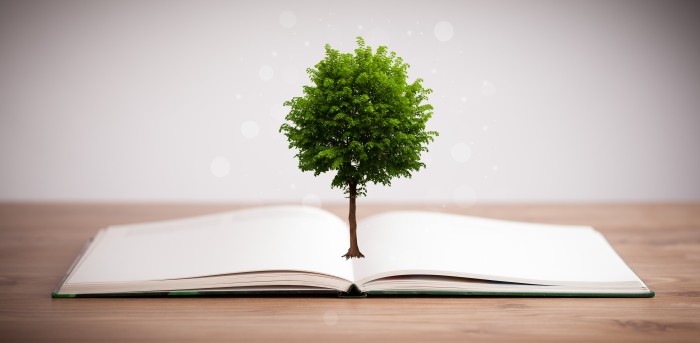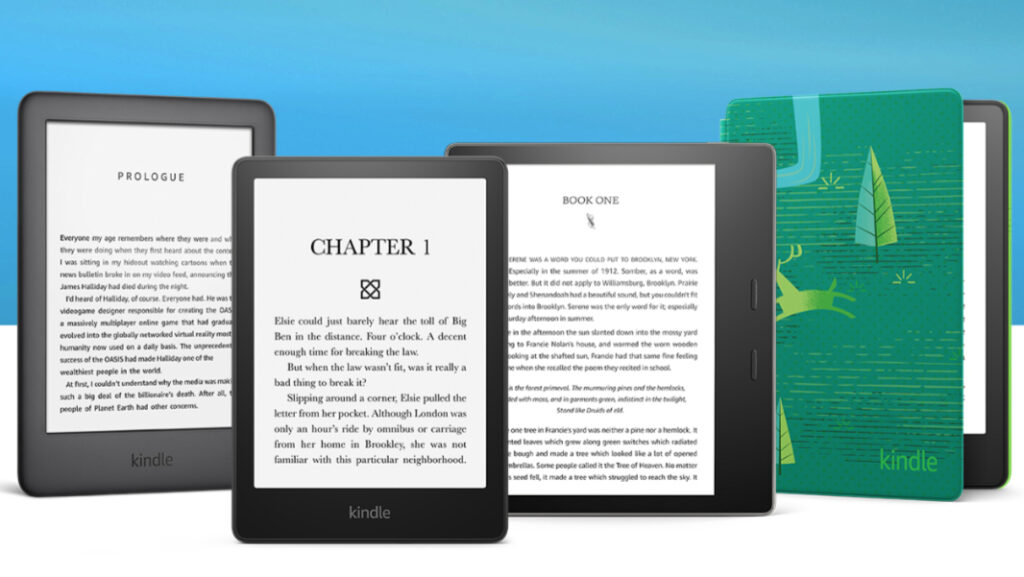Ask a voracious reader to switch from print books to e-readers and you may receive a lengthy verbal backlash! From the satisfaction of owning a heavily stacked bookshelf to the aromatic whiff of printed pages, physical books hold an almost irreplaceable place in the hearts of long-time readers. It is not uncommon for a bookworm to be flaunting their collection of the read and to-be-read books that they own.
However, studies show that there has been a significant sales dip for physical books ever since the coronavirus. It’s safe to say, we are not surprised. It’s true — the pandemic has changed book-buying and reading patterns all across the world. With the alluring alternative of affordable e-books, more and more people have been resorting to e-readers globally. This, in turn, has also motivated publishers to digitize their content.

Technology is integral to our lives now. It’s the new oil. Although the print industry boomed once the Covid-19 restrictions were removed, the period of lockdown created a new opening for e-readers in the market. In the chaos and mayhem of the emotional attachment to hardcover books and the accessibility of e-books, one question stands out: Books vs E-Readers: What is better for the Environment?
It is no secret that paper production contributes to large-scale deforestation. Trees contain carbon and help fight climate change. Deforestation in turn leads to global warming, desertification, flooding, rise in greenhouse gases, erosion of soil, and a plethora of slow but disastrous results for the environment.
A single metric tonne of paper is produced from the sacrifice of at least 17 trees. Loosely, this means that the death of one tree helps in the creation of an average of 59 kilograms of paper.
The process of paper production also involves the harvesting of trees, pulp production, bleaching, sheet forming, drying, and cutting. In the words of Gregory A. Keoleian, the director of the Center for Sustainable Systems at the University of Michigan: “Papermaking is a water resource-intensive process and a variety of chemicals are used in the pulping and bleaching process, resulting in air and water pollutant emissions.”

One may interject: “What if I switch to recycled paper?”
The use of recycled paper is but a drop in the ocean, in the attempts of reducing the environmental harms of this elaborate process. Producing a book from recycled paper still employs the use of over 11 ounces of minerals and close to a whopping 7.5 liters of water. To put this further into perspective, you may imagine that as much as two glasses of water are required for the production of a single page of your favorite book.
Now, if you find yourself asking — is owning multiple paperbacks and hardcovers of the entire Harry Potter collection really as important as saving the environment? Well, you are not alone. However, does this mean that e-readers are more eco-friendly than books? Hold on. To understand that, let’s understand how e-readers are made.

Let’s get one thing straight: an e-reader like the Amazon Kindle or the Kobo Forma is the modern-day equivalent of a bookshelf or even a whole library. Hence, one of the biggest benefits of an e-reader is that it’s paperless.
Therefore, at first glance, even if it seems that switching to e-readers is the way to go about saving forests and reducing CO2 emissions, it is much more complicated than that. The manufacturing of a single e-reader requires the extraction of 33 pounds of minerals.
In the article How Green Is My iPad?, Daniel Goleman and Gregory Norris noted that “The e-reader’s manufacture, along a vast supply chain of consumer electronics, is relatively energy-hungry, using 100-kilowatt hours of fossil fuels and resulting in 66 pounds of carbon dioxide. For a single book, which, recycled or not, requires energy to form and dry the sheets, it’s just two-kilowatt hours, and 100 times fewer greenhouse gases.”
Once purchased and brought to use, e-readers need power to keep on operating and hence require charging over and over again. Being dependent on the internet for survival, e-readers contribute a magnanimous carbon footprint in the process of repeatedly storing and downloading data from the web.
On top of it, the production of e-readers also means the future production of e-waste. Let’s say you receive an Amazon Kindle from your parents and love the switch from print books. After a few years, you feel the need to upgrade to a better, newer model. In this process, if you don’t take on the responsibility to recycle your ex-e-reader, it will most likely release toxic fumes and corrosive battery fluids into the soil, waterways, and environment, polluting the ecosystem for years to come. Phew, wouldn’t wanna be at the source of that chaos, right?

Now that we have established that BOTH print books and e-readers are bad for the environment, doesn’t that bring us back to square one? Let me save you the trouble, the answer is no. Here’s the catch: ascertaining whether e-readers can decrease a reader’s carbon footprint depends on the reader’s personal habits. Voila! We just have to determine the lesser of the two devils for you.
According to a series of studies conducted by Clean Tech, a reputed environmental consulting firm, the total carbon footprint produced by a single e-reader is approximately 168 kilograms. On the other hand, for a printed book this figure is around the 7.5 kilograms mark, depending on the type or length of the book. If we do the math correctly, a single e-reader produces the same emissions as the manufacture and distribution of 22.5 books; which is to say, one would need to read at least 22 to 23 books digitally in order to match the environmental impact of reading the same books in print.
Based on that logic, if you are a prolific reader you only need to read about 44 books on your e-reader (before recycling it) to halve your carbon footprint and impact on the climate. Of course, producing an e-reader is much more taxing than printing a single copy of The Alchemist but every time you download and read a book on your Kindle instead of cutting a tree, you are giving a little bit of the water deficit and CO2 back to the environment.
On the other hand, occasional readers must stick to print books. The reason is if you are NOT reading at least 22 books on your e-reader before exchanging it with a new one, you are actually increasing your carbon footprints as compared to when you read the same books in printed form, making your environmental impact greater and much more harmful in the larger scale of things.

Therefore, it is important to assess individual reading habits and determine how many books one is likely to read on an e-reader before investing in it. This calculation is required to approximate the carbon footprint left by an individual reader when reading books in print as opposed to downloading and reading electronic books. It assists in understanding whether or not the number will make up for the bulk of carbon emissions, natural resources extraction, or the mass-scale deforestation that led to either option.
Reading books digitally also increases one’s savings. Therefore, if you are looking to gift an avid reader, a new Kindle or a Kobo just might be the answer!
Written by – Manasi Varwandkar
